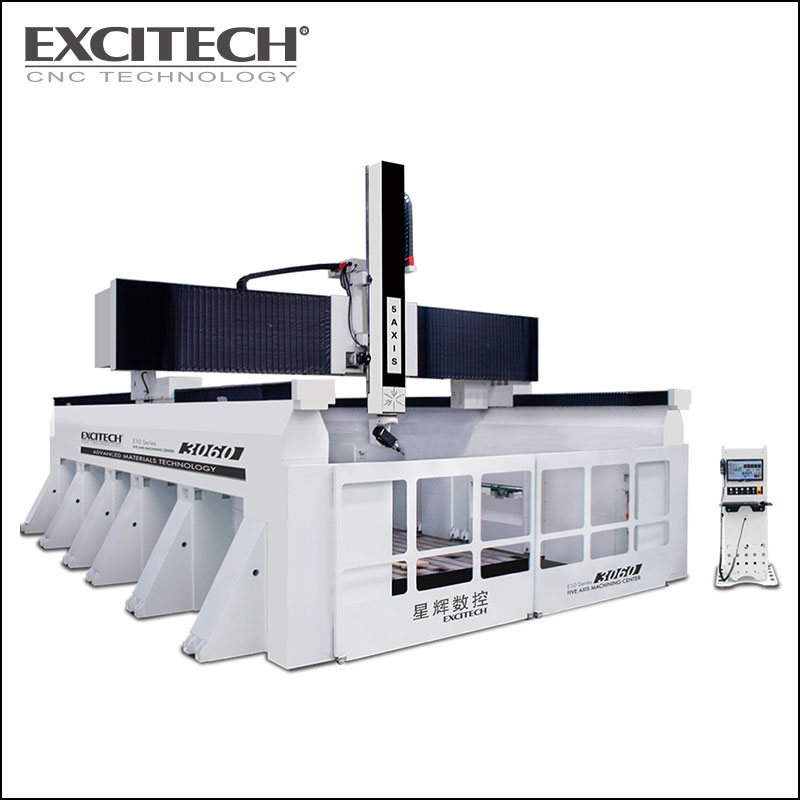
- English
- Español
- Português
- русский
- Français
- 日本語
- Deutsch
- tiếng Việt
- Italiano
- Nederlands
- ภาษาไทย
- Polski
- 한국어
- Svenska
- magyar
- Malay
- বাংলা ভাষার
- Dansk
- Suomi
- हिन्दी
- Pilipino
- Türkçe
- Gaeilge
- العربية
- Indonesia
- Norsk
- تمل
- český
- ελληνικά
- український
- Javanese
- فارسی
- தமிழ்
- తెలుగు
- नेपाली
- Burmese
- български
- ລາວ
- Latine
- Қазақша
- Euskal
- Azərbaycan
- Slovenský jazyk
- Македонски
- Lietuvos
- Eesti Keel
- Română
- Slovenski
- मराठी
- Srpski језик
Advantages of Five-axis Machining Center in Automobile Mold Processing
2021-08-23
Advantages of five-axis machining center in automobile mold processing
Five-axis CNC machining is a very important part of CNC machining. This technology has been widely used in the fields of automobile, light industry, medical treatment, shipbuilding, aerospace, and other high-precision instrument manufacturing. In traditional mold processing, three-axis machining centers and vertical machining centers are commonly used to complete milling of workpieces.
Advantages of five-axis machiningIn five-axis machining, the use of flat-bottom milling cutters to maintain the vertical state of the complex mold processing surface is of great help in reducing the processing time. Based on the principle of the five-axis machining center, it is also suitable for side milling of angled surfaces, which can eliminate rib-like textures caused by the processing of ball end mills, making the surface quality of the mold more ideal, and reducing the cost. The increased manual milling and manual work required to clean the surface of the mold reduces a lot of costs.
Through the five-axis machining technology, the problem that the workpiece needs to be repositioned at a complex angle and needs to be debugged and clamped for many times can be solved, not only shortening the time, but also greatly reducing the error generated, which is required when installing the workpiece. The large cost of fixtures has also been saved, and the machine tool has also achieved the processing of complex parts. The tool used in the five-axis processing is shorter, and the entire part can be processed at one time without the need to re-install the card. Or the use of longer tools required in similar three-axis machining can complete the production of the mold in a shorter time, and the quality of the surface of the part is also better.
Application of Five-axis Machining Center in Automobile Mould Processing
1. Processing of deep cavity molds
In the process of automobile mold manufacturing, if you want to use a three-axis machining center to realize deep cavity molds, you must lengthen the tool holders and tools. However, when you use a five-axis machining center to process deeper and steeper cavities, To create better process conditions for mold processing, the additional rotation and swing of the workpiece or spindle head can appropriately shorten the length of the tool, thereby preventing the occurrence of collisions between the tool, the tool holder and the cavity wall, and reducing the processing time. The jitter and breakage of the tool have prolonged the service life of the tool, and the surface quality and processing efficiency of the mold have also been greatly improved.
2. Processing of the side wall of the mold
For the processing of the sidewall of the mold, the tool length of the three-axis machining center is greater than the depth of the sidewall, and the depth of the sidewall determines the length of the tool. If the length of the tool is increased, its strength will be significantly reduced. 3 times the diameter, the knife phenomenon will occur, and the quality of the workpiece will be difficult to guarantee. For example, a five-axis machining center is used to process the side wall of the mold, and the swing of the spindle or the workpiece can be used to make the tool and the mold side wall always present a vertical state. When milling the mold side wall, a plane milling cutter can be used to improve the workpiece. Quality and extend the life of the tool.
3. Machining of flat surface of the mold
When processing the flat surface of the mold, the three-axis machining center needs to use a ball cutter to finish milling to obtain a good surface quality. In this case, it is necessary to increase the tool path, but the center rotation speed of the ball cutter tool is almost zero. When the mold is processed, the damage to the tool is relatively large, the service life of the tool will be sharply reduced, and the surface quality of the mold will also deteriorate. The five-axis machining center is used to process relatively flat curved surfaces. The tool can be placed on the workpiece at a certain angle and then the workpiece can be processed. This can increase the relative linear velocity between the workpiece and the ball-end tool, and not only can the tool life be improved Improve, the surface quality of the workpiece will also be greatly improved.
4. Machining the irregular surface of the mold
For the machining of molds with irregular curved surfaces, it was generally done through a three-axis machining center in the past. The direction of the tool cutting mold is to move along the entire path of the cutting. The cutting process will not change. At this time, the cutting state of the tool tip The perfect quality of each part of the mold cannot be guaranteed. For example, molds with frequent curvature changes and molds with deep grooves can be processed by a five-axis machining center. The cutting tool can always optimize the cutting state, and the tool can maximize the direction of the entire processing path. , While the tool can also move in a straight line at the same time, every part of the surface of the mold will be more perfect.
5. Machining of different geometric shapes of molds
When using a five-axis machining center to process a mold with a three-dimensional curved plane, the cutting of the mold is always protected in the best working state. The working angle of the tool can be changed in any area of the machine tool to complete the geometric mold. Processing.
6. Machining of inclined holes on the inclined surface of the mold
When processing the inclined hole of the mold inclined surface, the five-axis machining center can be used to place the spindle on the vertical side of the inclined surface of the workpiece through the swing head processing action of the swing head type machine tool and position it at the accurate hole position. To accurately process the oblique hole on the mold, at least two linear axis interpolation motions are required, and the accuracy of the hole position is also significantly reduced in this process. For processing oblique holes, such as a five-axis machining center with a pendulum table, the action is to place the oblique surface of the mold at a position perpendicular to the spindle through the pendulum table of the machine tool. The processing of the oblique hole of one of the linear axes of the spindle can be completed, which is obvious Improve the accuracy of the hole.
7. Milling of straight lines without changing direction of the mold
If you want to mill a straight line with no change in direction, you only need to draw a straight line on the tip of the tool. If the direction needs to be changed, the tip of the tool draws a curve. The direction of the tip of the tool is changed. It is extremely important to use a five-axis machining center to compensate the curve. If the control system does not consider the length of the tool, the tool rotates around the center of the axis, and the tip of the tool cannot be fixed, and it is very likely to move out of the current working position. However, the system of the five-axis machining center has five-axis control. Function. In the operation of processing molds, although the direction of the tool is changed using the five-axis control system, the position of the tool tip can remain unchanged. In this process, the necessary compensation movement of the xyz axis is also automatically calculated. At this time, the machining accuracy is significantly improved.





